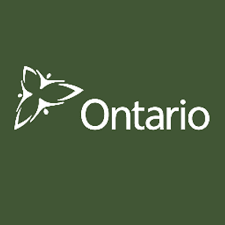
Province Releases School Safety Plan for the 2020-21 School Year
The Voice of Canada News
The Ontario government released its safety plan for the resumption of class for the 2020-21 school year, outlining scenarios for how students, teachers and staff can safely return to classrooms in September. The plan also provides choice to parents, enhanced online learning, and additional funding. While the decision to return to the normal school day routine will continue to be based on medical advice, boards and schools are being asked to plan for alternative scenarios that may need to be implemented in September depending on the province’s COVID-19 situation.
“Nothing is more important than protecting our kids in this province. Parents expect us to take every precaution to keep their children safe when they go back to school in September – and that’s exactly what we’re delivering today,” said Premier Ford. “This plan takes the best medical advice available from our public health experts to ensure every school board and every school is ready to ensure students continue learning in the safest way possible.”
Ontario’s plan to safely reopen schools will provide options for parents – to send their children in-class or to enter online learning – with health, safety and well-being at its core. Boards will be asked to plan for the following three scenarios to be implemented in September, depending on the public health situation at the time:
- Normal school day routine with enhanced public health protocols – Students going to school every day, in classes that reflect standard class size regulations.
- Modified school day routine – Based on public health advice, an adapted delivery model has been designed to allow for physical distancing and cohorts of students. Under this model, school boards are asked to maintain a limit of 15 students in a typical classroom at one time and adopt timetabling that would allow for students to remain in contact only with their classmates and a single teacher for as much of the school day as possible. This model would require an alternate day or alternate week delivery to a segment of the class at one time.
- At home learning – Should the school closure be extended, or some parents choose not to send their child back to school, school boards need to be prepared to offer remote education. Remote education should be delivered online to the greatest extent possible, including the establishment of minimum expectations for students to have direct contact with their teacher at the same time on a regular basis, also known as synchronous learning. Synchronous learning can be used as part of whole-class instruction, in smaller groups of students, and/or in a one-on-one context.
The government is instructing school boards to be prepared with a plan, should it be required, that includes an adapted delivery model, which could include an alternate day or alternate week attendance, staggered bell times and recess, and different transportation arrangements, among a variety of other considerations to ensure the safety of students and staff.
The government’s safety plan for schools was created following extensive consultation with the Chief Medical Officer of Health, health experts on the COVID-19 Command Table, medical experts at The Hospital for Sick Children, education sector partners, frontline workers, parents and students. While this plan reflects the best medical and scientific advice and recommendations available, parents who do not feel comfortable having their children physically return to school will have a choice to pursue online remote learning.
“We are taking every precaution, investing more, and listening to the best medical advice in the country to keep students, staff, and families safe,” said Minister Lecce. “I want to assure parents safety is our guiding principle and the right supports are being put in place to ensure our students are set up for success. I am grateful to Ontario students, education staff, and communities for stepping up during this difficult period.”
“Having careful plans in place to reopen schools in September is of the utmost importance for the mental and developmental health of children and youth, as well as their academic success,” says Dr. Ronald Cohn, President and CEO of SickKids. “The risk posed by COVID-19 cannot be completely eliminated, however, there are significant steps that can be taken to mitigate risk and protect the health and well-being of students, staff and their families.”
Key elements of the safety plan include:
- guidance for developing health and safety protocols, including the use of personal protective equipment;
- expectations of an in-class school environment;
- professional development training for teachers on the new protocols and directions;
- supports for students with special education needs;
- enhanced mental health and well-being support;
- proposals on how educators and students can move fluidly between in-class and remote learning;
- guidelines to help schools and boards in their communications with students and parents;
- guidelines for student transportation systems;
- expectations for the delivery of curriculum and assessment across subjects and grades;
- guidance for working with First Nations students, parents and communities;
- regional options for reopening based on the advice of local public health authorities; and
- a checklist to help boards in their reopening planning.

Moreover, the government announced $4 million in net new funding for cleaning, cleaning protocols, and financial support to hire additional custodial staff in September to ensure schools are safe.
School boards have been asked to prepare their own safety plans for the upcoming school year and submit them to the ministry by August 4, 2020. The ministry will be providing all boards with an opportunity to share their draft plans and seek feedback from a formalized table of medical experts that the ministry will be convening.
School boards will also be required to communicate with parents and students prior to the start of the 2020-21 school year, outlining the safety plan, guidance on health and safety measures and protocols, and any other changes that will be implemented when schools open in September.
QUICK FACTS
- Ontario is investing an additional $736 million in public education for the 2020-21 school year, for a total of $25.5 billion. This funding, provided through the Grants for Student Needs (GSN) program, represents the largest investment in public education in Ontario’s history.
- The Ministry of Education is working in partnership with school boards to deliver high-speed internet to all schools in Ontario, with all high schools having access to broadband by September 2020, and all elementary schools having access by September 2021. As of March 31, 2020, broadband modernization has been completed at 1,983 schools, including 403 northern schools. Installation is currently in progress at 2,954 schools, including 99 northern schools.
- School boards, in collaboration with their local public health units, are encouraged to refer to Transport Canada’s recently issued Federal Guidance for School Bus Operations as part of their student transportation planning.
- On March 20, 2020, the Ministry of Education unveiled the Learn at Home / Apprendre à la maison portal, which provides online resources for families and students while schools remain closed.
- Through the Ontario Together web site, the province identified over 30 proposals from businesses, organizations and everyday Ontarians to provide solutions to remote learning while schools are closed during the COVID-19 global pandemic.




